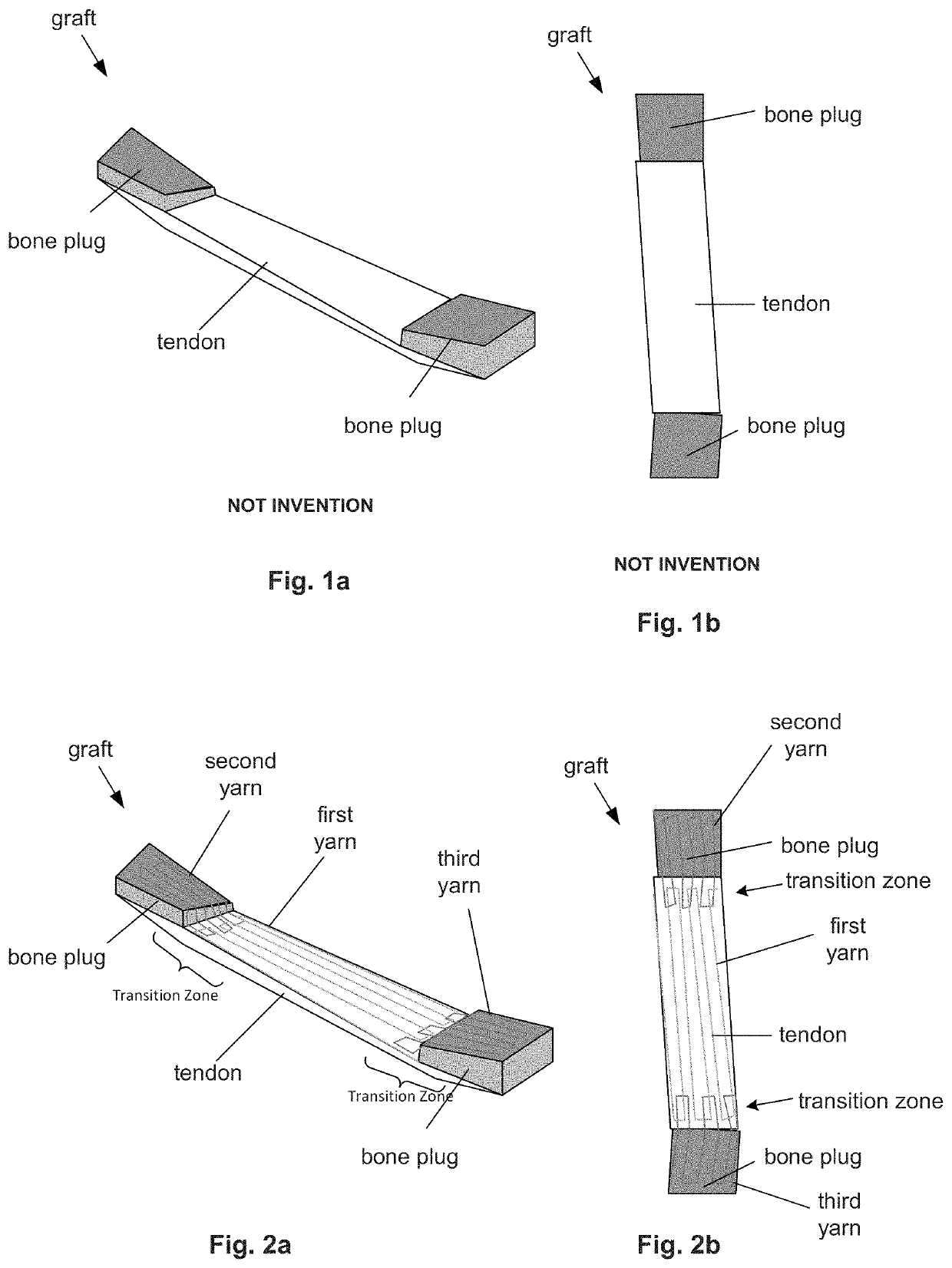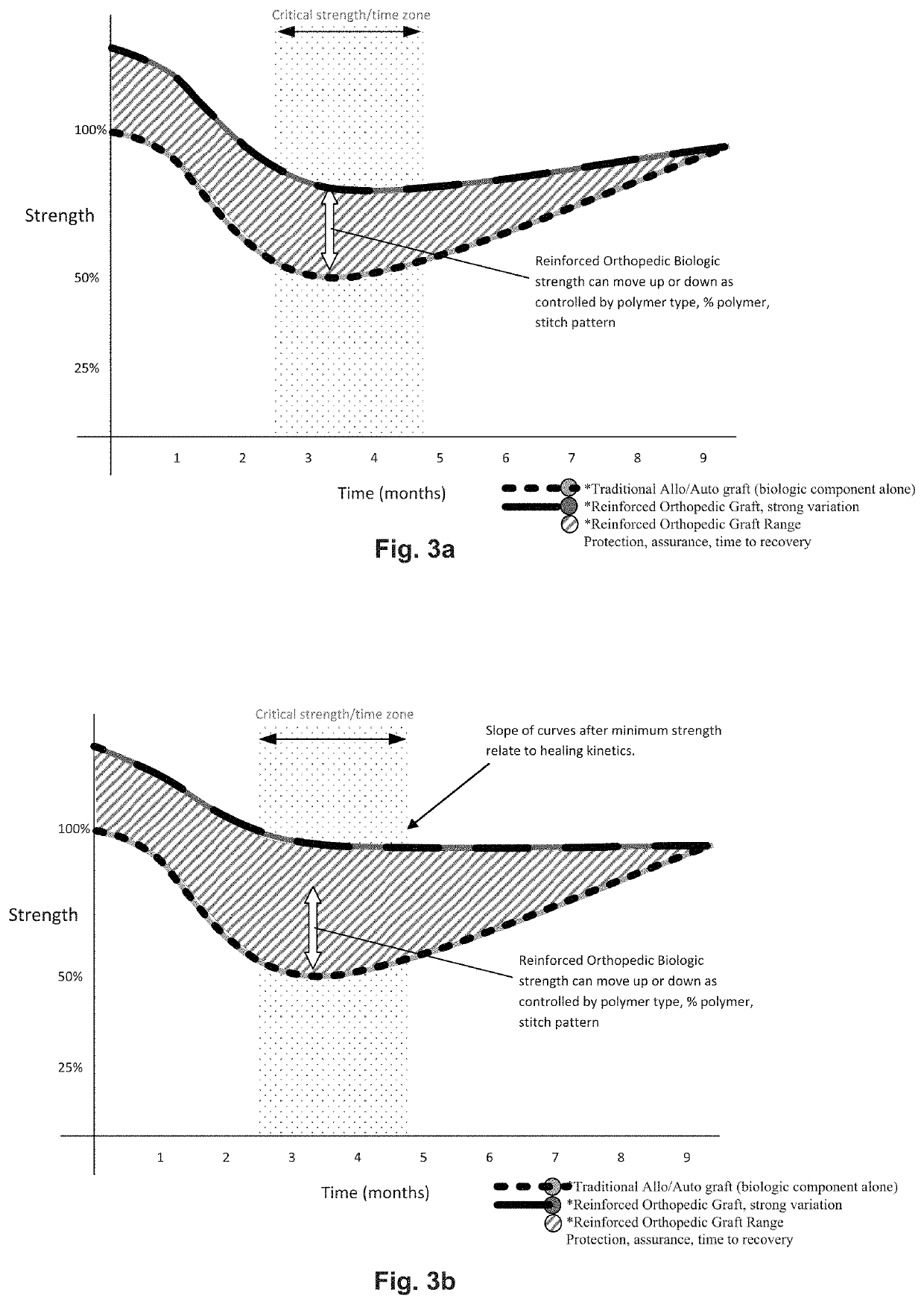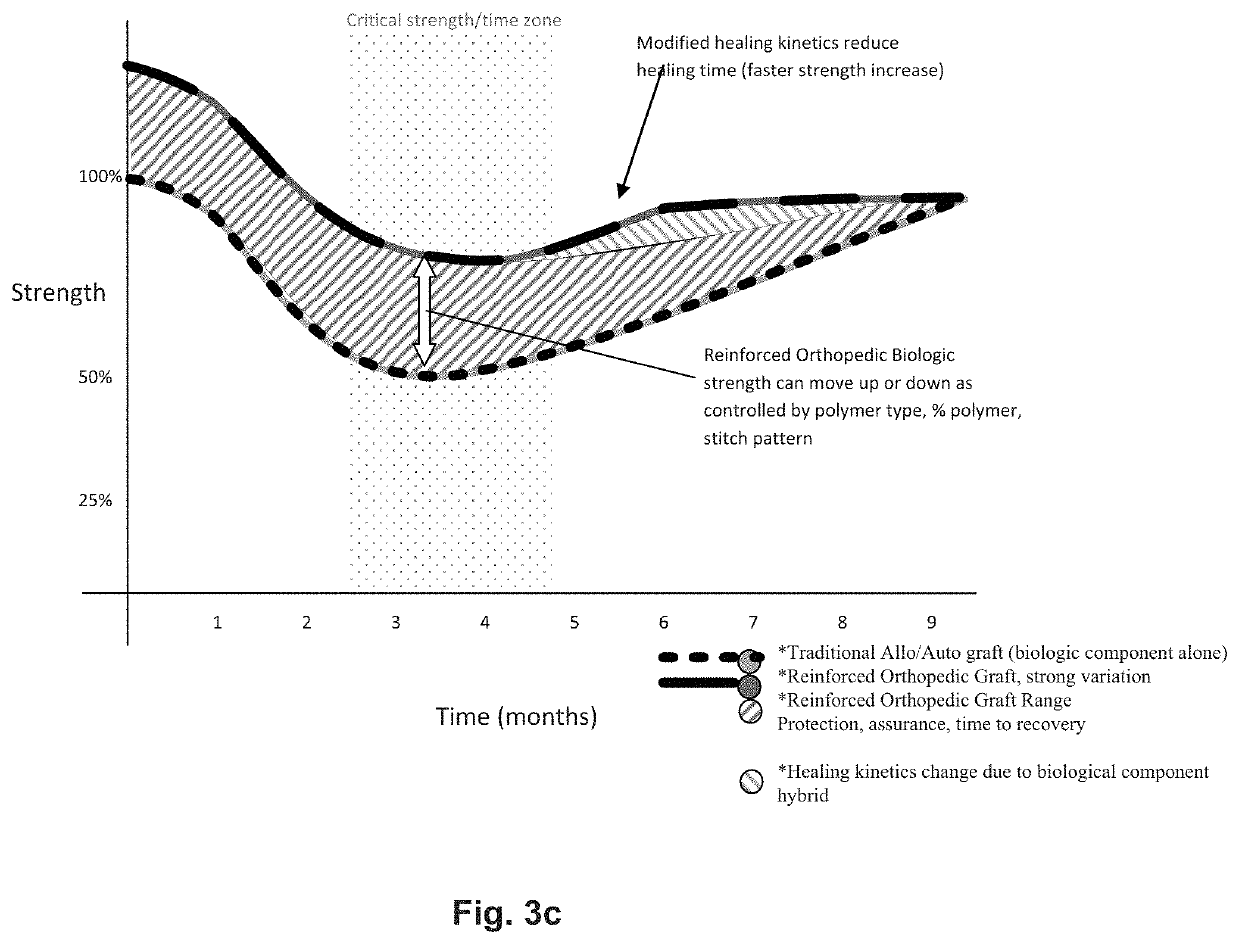Reinforced orthopedic devices and methods
a technology of reinforced orthopedic devices and grafts, applied in the direction of muscles, ligaments, etc., can solve the problems of biological graft failure, synthetic graft failure, and many others, and achieve the effect of reducing the risk of fractur
- Summary
- Abstract
- Description
- Claims
- Application Information
AI Technical Summary
Benefits of technology
Problems solved by technology
Method used
Image
Examples
Embodiment Construction
[0049]FIGS. 2a and 2b illustrate that a device, such as a synthetically reinforced orthopedic graft (e.g., an ACL graft), can have a composite intermingling, interweaving, interstitching, innerlacing, comingling, blending, merging, or combinations thereof, of one or more a natural biologic components and one or more synthetic components.
[0050]The graft can be used for tendon or ligament replacement, for example, in the knees (e.g., ACL, PCL, MCL, LCL), ankles (e.g., lateral ankle ligament), shoulder (e.g., GHL, CAL, CCL, THL), spine (e.g., spinal ligament), or combinations thereof.
[0051]The biologic component can be a biologic graft, such as a patellar tendon graft, as shown in FIGS. 1a and 1b, other biologic graft listed herein (e.g., fascia lata grafts, hamstring grafts, and quadriceps grafts), or combinations thereof. The biological component can have soft (e.g., fascia membrane, ligament, tendon, muscle, or combinations thereof), hard (e.g., bone) tissue, or combinations thereof...
PUM
 Login to View More
Login to View More Abstract
Description
Claims
Application Information
 Login to View More
Login to View More - R&D
- Intellectual Property
- Life Sciences
- Materials
- Tech Scout
- Unparalleled Data Quality
- Higher Quality Content
- 60% Fewer Hallucinations
Browse by: Latest US Patents, China's latest patents, Technical Efficacy Thesaurus, Application Domain, Technology Topic, Popular Technical Reports.
© 2025 PatSnap. All rights reserved.Legal|Privacy policy|Modern Slavery Act Transparency Statement|Sitemap|About US| Contact US: help@patsnap.com



